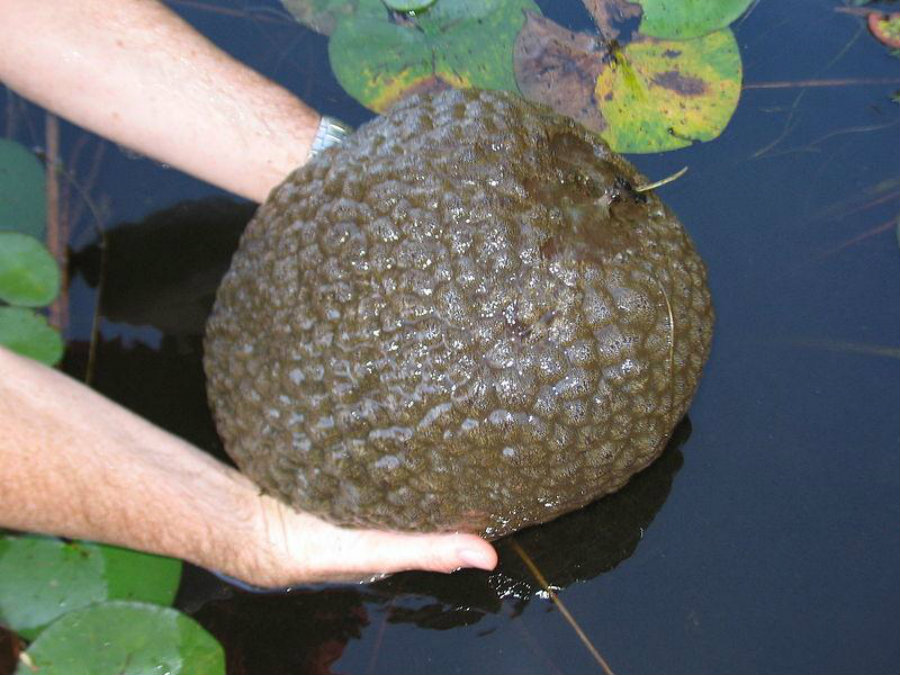A gelatinous creature nicknamed “dragon booger” has been recently spotted for the first time in Stanley Park in Vancouver, British Columbia. The odd creatures live in rivers and lakes and were recently seen because the low water levels made them more visible.
The gelatinous being, known as a bryozoan, was found in the Stanley’s Parks “Lost Lagoon,” a small body of water in the southern part of the park.

Celina Starnes from the Stanley Park Ecology Society showed the bryozoan in a video for Vancouver Courier, and told National Geographic the creatures have a gelatinous, firm quality, “almost like Jell-O.”
Gelatinous ‘dragoon boogers’ can only survive in waters warmer than 60 degrees F
Bryozoan clumps like the one found in the Lost Lagoon are actually hundreds of creatures living together, as a single organism –called zooid—is only a fraction of a millimeter. Zooids are hermaphroditic creatures but spread due to statoblasts, a clump of cells found in the organism that can reproduce asexually if they’re broken off from the colony.
Bryozoans are ancient creatures, as fossil records show marine bryozoans lived as far as 470 million years ago. The kind found in Vancouver is known as a “magnificent” bryozoan, Pectinatella magnifica, and was previously only known to live in areas east of the Mississippi River.
The creatures are still mysterious for scientists, and there is an ongoing debate on whether they are an invasive species or not. A 2012 study from the U.S. Fish and Wildlife Service suggested that climate change could be fueling the spread of bryozoans. Meaning, zooids can only survive in water warmer than 60 degrees Fahrenheit, which made scientists suggest that warming temperatures are allowing the creatures to spread north.
Bryozoans could have gone unnoticed for years in the region
Bryozoans feed on algae in nutrient-rich waters, so an increase in their population could disturb the ecological balance of a freshwater system. National Geographic reports they have also been found to clog pipes.
Other scientists say bryozoans have probably gone unnoticed for a while. They are difficult to find because of their muddy color, which helps them camouflage in murky waters. Starnes said they are often confused with rocks or a batch of salamander eggs. She noted they doubt this is the first time they have been in Vancouver.
Ian Walker, a biology professor at the University of British Columbia who has studied the gelatinous creatures, said he believes there isn’t enough research to conclusively tell whether or not the species is moving north.
Walker says it’s something that could have been “easily overlooked” in the past, as other bryozoans have been found west of Vancouver in the Okanagan Valley.
“I think we’re near the northern limit of them. With warming climate, they might migrate somewhere farther north,” Walker told National Geographic. “I can only really speculate how they might have spread.”
Source: National Geographic
